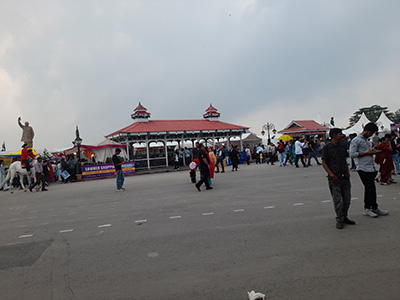New Delhi/Shimla: In a landmark ruling, the Supreme Court of India has overturned the restrictive order imposed by the National Green Tribunal (NGT) and has given its nod to the Shimla Development Plan, marking a pivotal moment for balancing the city's development and environment.
In a 100-paged verdict, the apex court division Bench of Justices B.R. Gavai and Aravind Kumar, reverses the November 2017 ruling of the NGT and gave the green light to the State of Himachal Pradesh to move forward with its development plan, dismissing challenges from environmental groups.
The decision comes after a thorough consideration of expert committee reports and studies, addressing various aspects, including environmental and ecological concerns.
The court clarified that while not scrutinizing the development plan in minute detail, it believes there are adequate safeguards to balance development needs with environmental and ecological considerations.
However, the ruling emphasizes that this should not be construed as an endorsement of the development plan.
The plan underwent a rigorous process, involving experts in urban planning and the environment, as well as public participation through objections and suggestions.
The court asserted that if any citizen has grievances regarding the plan's impact on the environment, legal channels are available for redressal.
Notably, the court dismissed the issue of compensation raised by interveners, who are plot holders in the 'Green Belt' area, deeming it beyond the scope of the present proceedings. The court directed the interveners to seek appropriate remedies available to them under the law.
The court's order allows the State of Himachal Pradesh to proceed with the development plan published on June 20, 2023, while urging continued adherence to environmental safeguards. The decision marks a crucial milestone in balancing developmental activities with ecological preservation.
The NGT's earlier directive, limiting construction in Shimla city to two and a half storeys, had posed challenges for property owners and local authorities involved in construction activities.
The government, supporting its appeal against the NGT orders, acknowledges the Supreme Court's approval for new building constructions in the designated area.
This development signifies a significant departure from the NGT's complete ban on construction activities in the Shimla project area, including stringent restrictions in the Shimla Core and Green Zone.
The NGT's order had placed a blanket prohibition on construction activities in the Shimla project area, creating challenges for the state government's initiatives.
Apex court observed that the NGT and court cannot restrain officials from making development plan and Ngt has overstepped its jurisdiction.
This legal outcome follows the Supreme Court's consideration of a Special Leave Petition (SLP) filed by the Himachal Pradesh government in 2018-19, challenging the NGT's 2017 verdict.
The SLP was a response to a complaint by one Delhi-based Yogendra Mohan Sen, contesting the NGT's restrictions on construction activities in the Shimla development plan area.
The NGT's imposition of stringent construction restrictions, ostensibly for environmental conservation, faced criticism from various quarters, particularly affected homeowners and state authorities grappling with the practical implications of such limitations.
In response to these challenges, the state government promptly sought redress by filing an appeal with the Supreme Court against the NGT order.
The government outlined the difficulties faced by both homeowners and authorities in executing construction projects under the NGT's stringent regulations.
In today's decisive ruling, the Supreme Court sided with the state government, nullifying the NGT order and endorsing the Shimla Development Plan proposed by the government.
The Shimla Development Plan (SDP) aims to develop four satellite towns—Fagu, Chamiyana, Ghandal, Naldehra—and other hubs to alleviate congestion in the old city center.
With a focus on non-motorized transport systems, skybridges, walking trails, and heritage walks, the SDP seeks to transform the city's infrastructure. It also plans to introduce a heli-taxi service to enhance tourism in its operational area covering 22,450 hectares.
However, questions arise about whether the proposed satellite townships and hubs will consider Shimla as an organic ecosystem or if the SDP will end up as another plan with little implementation on the ground.
Notably, the SDP, a GIS-based plan, addresses various issues such as parking, congestion, transport, construction, waste management, and more.
It aims to provide relief to plot owners in the green area of the core city, allowing construction where no green tree has grown.
Commercial and residential land use percentages have been adjusted under the SDP, with an emphasis on increasing areas for industrial, economic, and public use.
The plan stipulates additional area requirements based on a rate of 120 persons per hectare, recognizing the city's projected population to reach over 6.25 lakh by 2041.
While the SDP has been notified by the Town and Country Planning Department, questions linger about regularizing old buildings in new areas merged into the Shimla Municipal Corporation and integrating farmers practicing agriculture in the proposed satellite towns.
This legal outcome is poised to reshape the regulatory framework for construction activities in Shimla, providing a new trajectory that balances environmental concerns with the practicalities faced by those involved in the construction sector.












